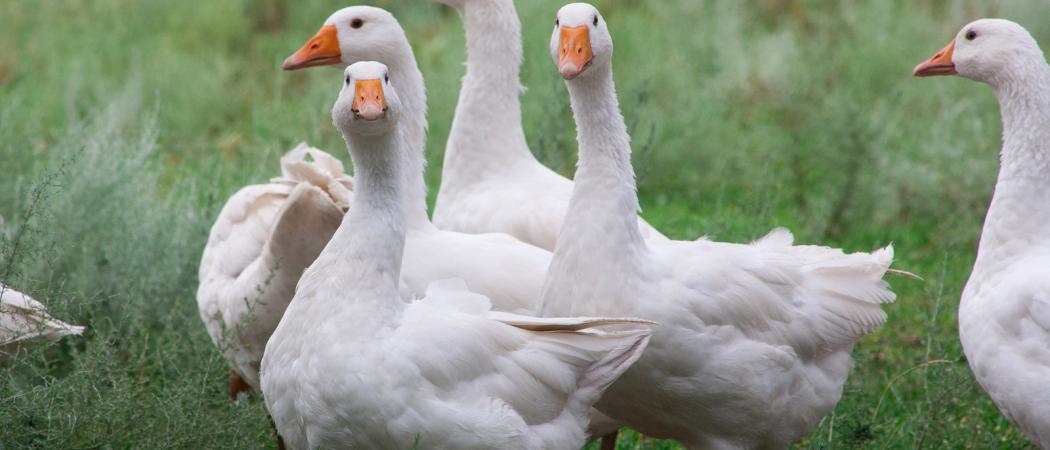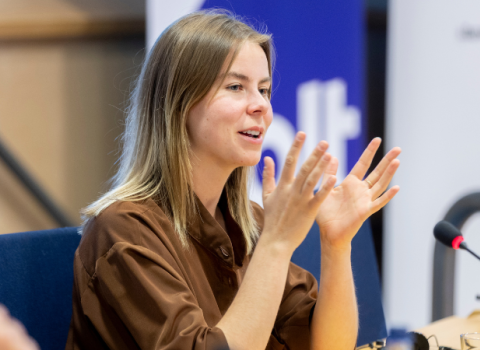Governments around the world are now pushing for ‘disruptive innovations’. Quebec’s AUDACE programme is funding scientists to work with farmers, dancers and others for surprising results

Photo: Bigstock
MONTREAL - Eight years ago, Fernande Ouellet left a comfy city life as a photographer to settle on a small farm rearing ducks and geese. Now, she is working with a group of scientists to disrupt the way farms like hers operate.
At present, she explains, almost all foie gras is grown by force-feeding the geese until their livers get fatty – a cruel practice condemned by many. Could the science of biomarkers change this, permitting the birds to feed naturally without sacrificing production efficiency? Ouellet teamed up with University of Montreal medical researchers and a celebrity chef to win a small Quebec government grant to find out.
She says if she finds the answer, “I don’t want to patent it. I want to train the (other) farmers. I want to disrupt the industry.”
Disruptive innovation – whether of farms or of all society - seems to be on many minds these days. Ouellet’s grant comes from AUDACE or audacious, a small programme begun in 2017 by the Quebec Research Funds to encourage surprising, cross-disciplinary thinking. Or, as Rémi Quirion, the Quebec government’s chief scientist puts it, only half joking, “We want to have a place for a lot of crazy ideas.”
But it doesn’t stop there. In Ottawa, the Canadian capital, the government recently announced the first C$38 million (€25.5 million) in grants from its New Frontiers in Research Fund, to encourage similar out-of-the-box, multi-disciplinary (and international) research. In Tokyo, the Japanese government is preparing what it calls “moonshot” programmes to push the country’s researchers to take bigger risks. And in Brussels, Paris, Berlin and other European capitals a series of programmes are planned to promote what they call disruptive innovation; the EU’s Horizon 2020 programme, for instance, already includes a pilot for a European Innovation Council to fund this kind of high-impact R&D.
“There are many countries talking now about breakthrough, disruptive innovation,” observes Dominique Guellec, head of the science and technology policy division at the Paris-based Organisation for Economic Cooperation and Development. “It’s very fashionable.”
Can governments fund risk?
The reasons are many. Developed countries, with slowing economies and growing problems, are looking to science and technology to come up with unexpected solutions – particularly in countries that feel US tech companies have been doing most of the disruption lately (and the model for many of these new programmes is the Pentagon’s Defense Advance Research Projects Agency, which funded the precursor to the Internet.) At the same time, Guellec says, there is a growing sense that R&D funding has become so big and established that it discourages risk-taking, and funders must compensate by creating sub-programmes specifically for high-risk ideas.
“Current funding mechanisms tend to favour more incremental research,” Guellec says. When a researcher applies for a grant, “there is a committee sitting for evaluation; they revert to the average. And the researchers need to have publications, so they won’t take risk.” Can funders change the game, and force risk-taking? That requires, at the least, that they accept from the start that most of the projects will fail. In doing so, he says, “you hope the return will be high enough to compensate. It’s the venture capital approach.”
That kind of thinking was certainly in play in Quebec. In mainstream grant programmes, Quirion says, “success rates are so low that researchers don’t take risks.” AUDACE, a small part of the research funds’ overall grant portfolios, is aiming for something different. “It’s like in baseball. We don’t want to get to first base. We want a home run.”
The programme started in 2017 with just C$2.2 million in grants, and some audacious requirements. Proposals must include researchers from at least two disciplines. They must aim to disrupt established ways of thinking. They must seek “radically innovative” knowledge with a “strong potential for impact” – in short, high risk, high reward. And, perhaps most unusual of all in the paperwork-clogged grant world, applicants must be able to describe their project in just a few pages. Those making the cut get a short interview. If they win, the sums aren’t large: C$100,000 for the grantees, C$25,000 for their host universities, and two years to spend it. Quirion hopes, after two rounds of pilot grants, to expand the programme so those projects showing promise can get an extra C$500,000 a year to scale up.
Battling super-bugs, dancing for health
Grantees so far are certainly interesting. One group, at McGill University in Montreal, wants to reduce the global risk of superbugs by developing treatments for tuberculosis that don’t actually kill the bacterium that causes it. Another combines health researchers at four universities with dancers of the Grands Ballets Canadiens de Montréal to study the therapeutic effects of dance on seven types of patient populations.
Yet another group, from the University of Sherbrooke, combines a mechanical engineer, a financial analyst and chemists to study “sun in a bottle” – with the aim of turning cars from a climate problem into a solution. The group is working on a way to use concentrated solar energy to make fuel from water and carbon dioxide, and then figure out how much it might cost to make and how much consumers might pay for it. While the technology is being developed in many places, it’s still too expensive to substitute for petrol in cars, says researcher Jérome Claverie. So their research involves financial analysis. “The main obstacle (to take-up) is the cost; that must be socially acceptable. At what point does it become profitable?”
The goose study is led by Guy Cloutier, a medical professor at the University of Montreal. Besides the farmer, Ouellet, it also involves expertise in echography, biomarkers – and a celebrity chef, Dan Barber, of Blue Hill restaurant in Manhattan’s West Village, New York.
Geese naturally stuff themselves before setting off on their long migrations; that makes their livers fatty. For centuries, however, farmers have known that they can also force feed the geese to get more foie gras whenever needed, rather than waiting for nature to take its course in the Autumn. That practice has come under attack as cruel, and recently led to a court fight in California to stop it. Some farmers have been trying to revive natural methods, but the yields are low: it’s hard to manage the flock, and the geese aren’t all ready for slaughter at the same time.
Ouellet moved to a small farm in Granby, east of Montreal, in 2011 with her partner, to raise ducks and geese. There, she wondered if the science of human biomarkers might be applied to her flocks – to find easy signals for when each goose, feeding naturally, has a liver just right for harvesting. It’s a complicated business. Small details get in the way: for instance, it was harder than you’d think to get the local abattoir not to mix up or toss out the tags tracking each bird. The core research begins this Autumn, when the geese start over-eating naturally.
If it works, Ouellet will use the method on her own geese and start trying it on her ducks, too – but her real aim is to change the industry. Foie gras, she says, is both “criticised and récherché.” It’s also a tiny industry, with perhaps 20 farmers in Quebec province producing small quantities. But she can dream: “If the industry is able to recreate itself, to embrace this technology, to be more holistic…”




 A unique international forum for public research organisations and companies to connect their external engagement with strategic interests around their R&D system.
A unique international forum for public research organisations and companies to connect their external engagement with strategic interests around their R&D system.